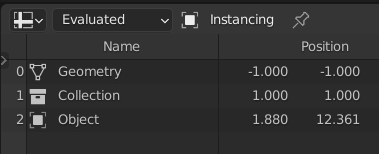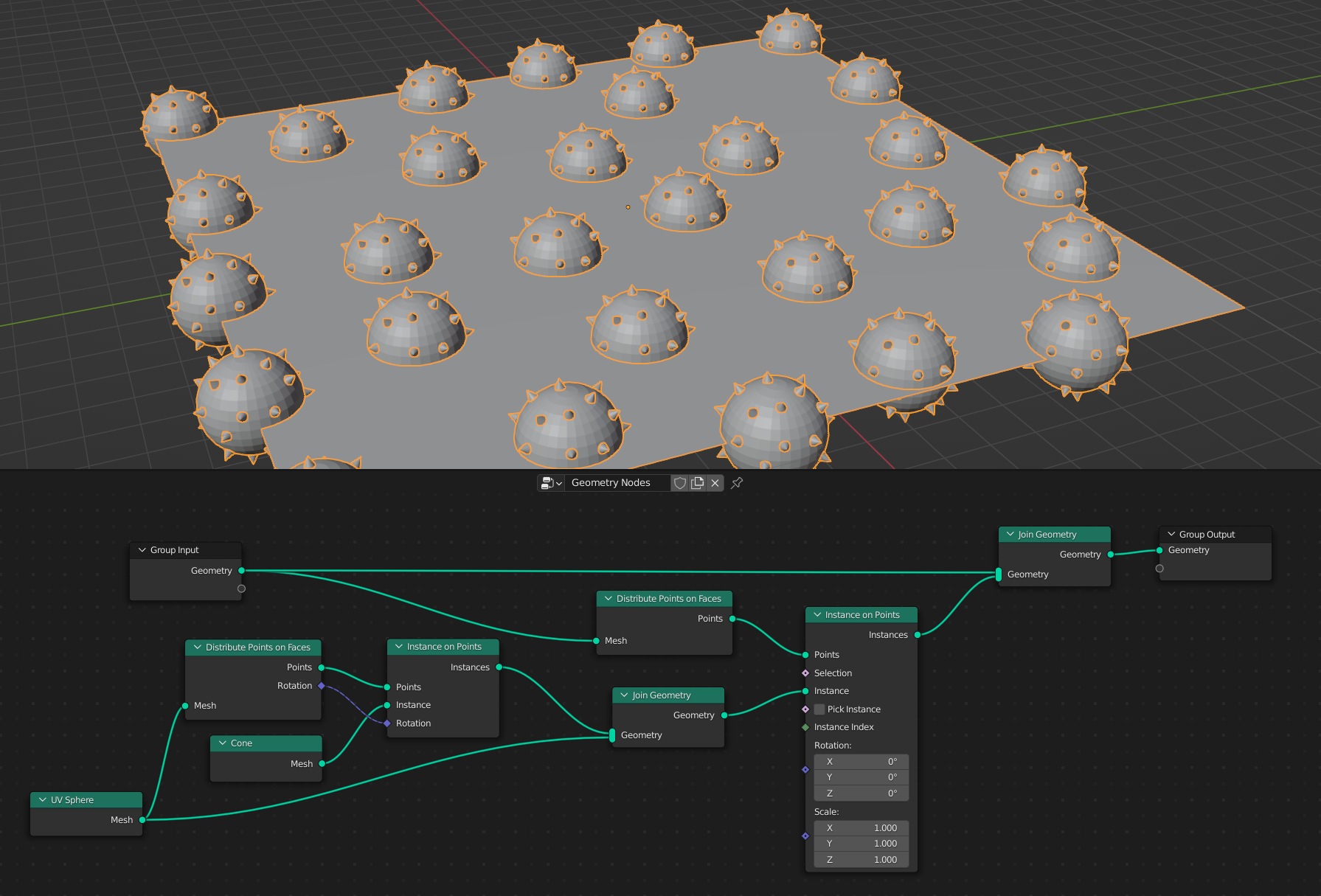实例

实例的三种类型。
In addition to storing real data like a mesh or a curve, a geometry can store instances, which themselves can reference more geometry, or an object, or a collection. The purpose of instancing is to allow including much more geometry in the result, without duplicating the actual data. This is because renderer like Cycles can handle the same geometry data in many different locations better than when the data is duplicated.
Each instance keeps track of which geometry it corresponds to, and a Transform.
Instances can also store the id attribute, used for correct motion blur when instances
move in an animation.
The main node used to create instances in geometry nodes is the 实例化于点上.
Warning
当前,从几何节点实例化不能与从属性编辑器中的实例化面板实例化混合。
嵌套实例
Since instances can store a geometry, and a geometry can contain instances, nested instancing is possible. In other words, it is possible to instance an instance, or even a collection of instances. By default, the 实例化于点上 will create nested instances by instancing on the points real geometry and instanced geometry.

A node group that creates nested instancing by chaining Instance on Points nodes.
Here, nested instancing is used to distribute geometry that contains both a mesh and instances. The output geometry contains a "real" mesh, and a group of instances. Each instance contains a sphere mesh and many instances of a cone geometry.

上述示例的实例化几何图形树。
What makes this method helpful is that the output geometry only contains three unique meshes: the plane, the sphere, and the cone. This would make the performance much better if the meshes were more complicated.
Warning
Only eight levels of nested instancing are supported for rendering and the viewport currently. Though deeper trees of instances can be made inside geometry nodes, they must be realized at the end of the node tree.
实例处理
Almost all nodes that process geometry do so by processing each unique geometry in their input's tree of instances separately. For example, if a 表面细分 was placed at the end of the example above, it would only have to subdivide three meshes, rather than each instance of a mesh. Another important example is processing with the output of the 字符串 转换为 曲线, where each unique character only has to be processed once.
这种方法可以大大提高性能,但是这意味着操作的结果对于特定几何体的每个实例都是相同的。为了每个实例都有独特的结果,可以使用实现实例节点。